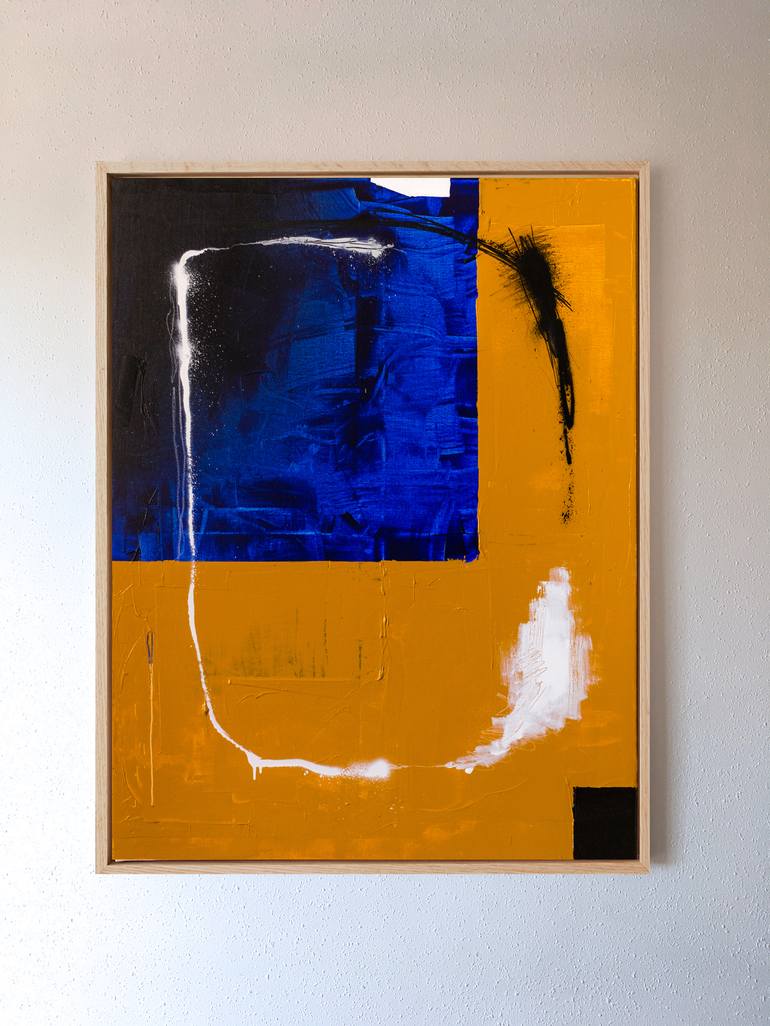







VIEW IN MY ROOM
INDIGO Painting
Spain
Painting, Acrylic on Canvas
Size: 28.3 W x 36.6 H x 0.8 D in
Ships in a Box
Artist Recognition

Featured in the Catalog

Artist featured in a collection
About The Artwork
Painting, INDIGO, unframed Indigo children, according to a pseudoscientific New Age concept, are children who are believed to possess special, unusual, and sometimes supernatural traits or abilities.The idea is based on concepts developed in the 1970s by Nancy Ann Tappe and further developed by Lee Carroll and Jan Tober. The concept of indigo children gained popular interest with the publication of a series of books in the late 1990s and the release of several films in the following decade. A variety of books, conferences and related materials have been created surrounding belief in the idea of indigo children and their nature and abilities. The interpretations of these beliefs range from their being the next stage in human evolution, in some cases possessing paranormal abilities such as telepathy, to the belief that they are more empathetic and creative than their peers. No scientific studies give credibility to the existence of indigo children or their traits. Some parents choose to label their children who have been diagnosed with learning disabilities as an indigo child to alternatively diagnose them. Critics view this as a way for parents to avoid considering pediatric treatment or a psychiatric diagnosis. Some lists of traits used to describe indigo children have also been criticized for being vague enough to be applied to most people, a form of the Forer effect. --- UNFRAMED ORIGINAL WORK / SIGNED ON THE BACK / Coming from backgrounds like photography, graffiti, illustration, graphic design and interior design, I let myself get carried away by the combination of my experiences, so far, in these fields and different techniques, anger and love, myodesopsias, colors and good music... All this, results in cerebral impulses that I throw up on canvases creating different textures. We are all one, but everyone has his own fingerprint. Here is mine.
Details & Dimensions
Painting:Acrylic on Canvas
Original:One-of-a-kind Artwork
Size:28.3 W x 36.6 H x 0.8 D in
Frame:Not Framed
Ready to Hang:Not applicable
Packaging:Ships in a Box
Shipping & Returns
Delivery Time:Typically 5-7 business days for domestic shipments, 10-14 business days for international shipments.
Handling:Ships in a box. Artists are responsible for packaging and adhering to Saatchi Art’s packaging guidelines.
Ships From:Spain.
Customs:Shipments from Spain may experience delays due to country's regulations for exporting valuable artworks.
Have additional questions?
Please visit our help section or contact us.
Artist Recognition

Featured in Saatchi Art's printed catalog, sent to thousands of art collectors

Artist featured by Saatchi Art in a collection
Thousands Of Five-Star Reviews
We deliver world-class customer service to all of our art buyers.
Global Selection
Explore an unparalleled artwork selection by artists from around the world.
Satisfaction Guaranteed
Our 14-day satisfaction guarantee allows you to buy with confidence.
Support An Artist With Every Purchase
We pay our artists more on every sale than other galleries.
Need More Help?